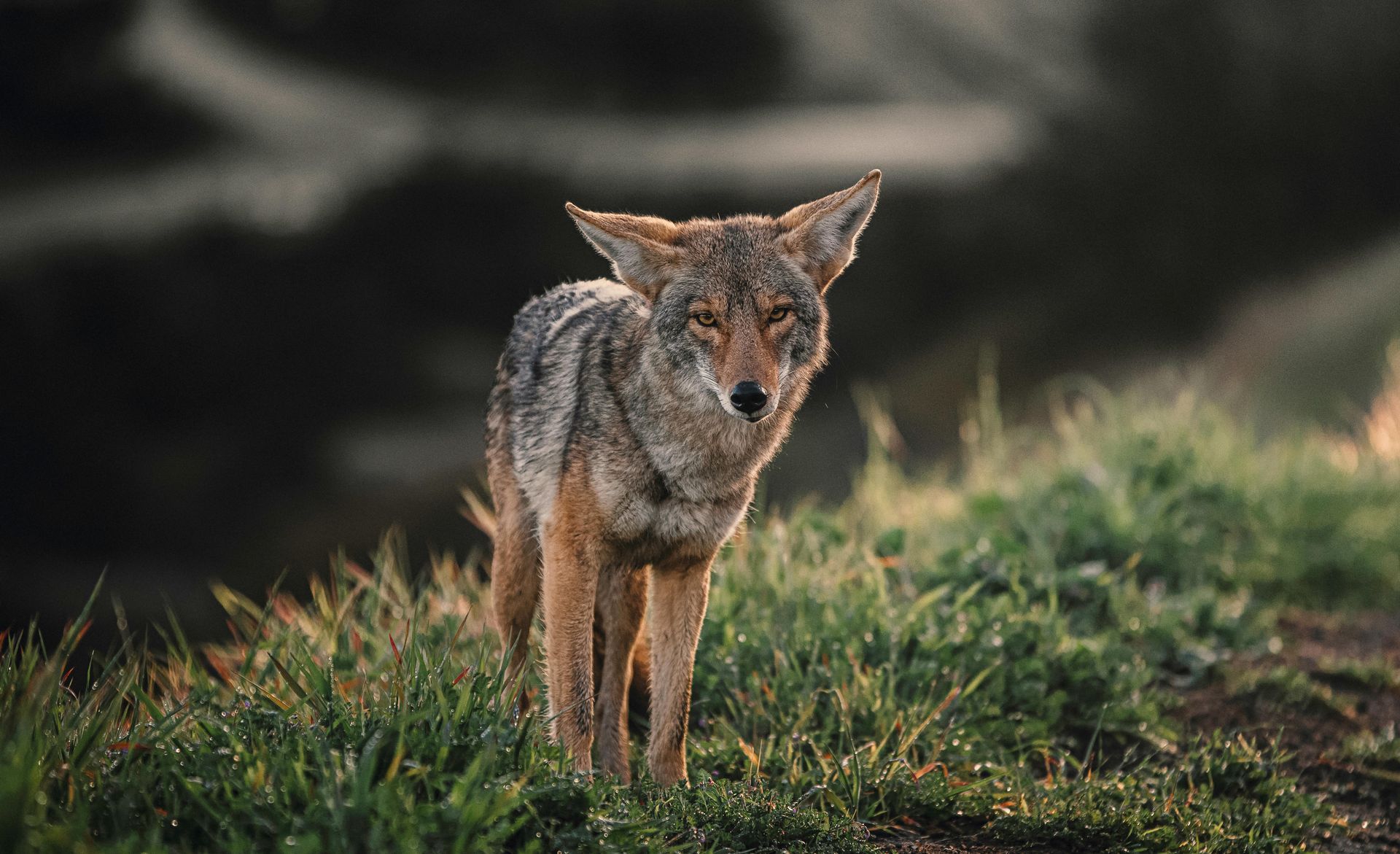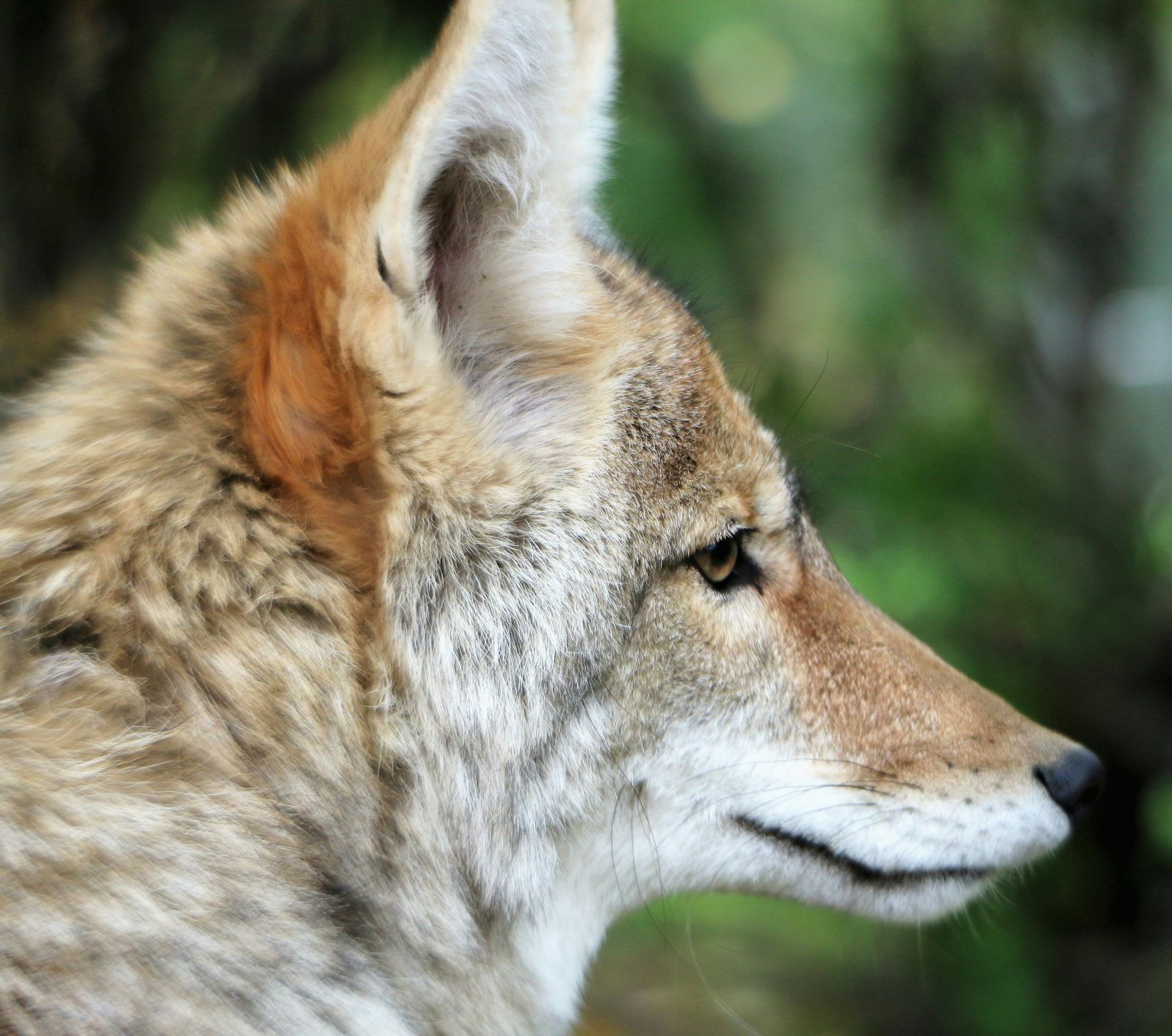Coyotes are a highly adaptable and intelligent mammals native to North America. Known for its keen senses and resourcefulness, the coyote thrives in diverse habitats, including forests, grasslands, deserts, and urban areas. As an opportunistic omnivore, it plays a vital role in maintaining healthy ecosystems by controlling rodent populations and scavenging carrion.
Coyotes typically weigh between 20-50 pounds and measure up to 4 feet in length, including their bushy tails. Their fur varies in color from grayish-brown to reddish-tan, with a distinctive black-tipped tail. Their pointed ears and slender snouts give them a fox-like appearance. Coyotes are known for their remarkable vocalizations, which include howls, yips, and barks that they use to communicate with their pack members.
Coyotes are most active at dawn and dusk but can be spotted during the day, especially in urban environments. They are monogamous, forming strong pair bonds. Mating occurs in late winter, with females giving birth to litters of 4-7 pups in spring. The pups stay with their parents for several months, learning critical survival skills before dispersing to establish their own territories.
Natural predators of coyotes include mountain lions and gray wolves, although human-related threats such as habitat destruction, vehicle collisions, and lethal control measures pose greater risks. Coyotes are found across North America, from Alaska to Central America, and continue to expand their range due to their adaptability.

For your safety and the well-being of wildlife, please observe animals from a distance and avoid touching or disturbing them. If you encounter an animal that appears injured or in distress, contact a licensed wildlife rescue organization for guidance before intervening.
Found An Animal? Not sure how to help a wild animal in need? Learn when to step in, who to call, and how to help safely.
Did You Know?
- Coyotes are excellent swimmers, enabling them to cross rivers in search of food or territory.
- They can run up to 40 miles per hour, making them one of the fastest mammals in North America.
- Coyotes have a diverse diet, ranging from small mammals and insects to fruits, nuts, and human food waste.
- They are highly vocal, using a range of sounds to communicate and coordinate with their pack.
- Unlike wolves, coyotes are solitary hunters most of the time, but they form family groups for raising young.
- Coyotes help control rodent populations, reducing agricultural pests and maintaining ecological balance.
- They have learned to thrive in urban environments, often coexisting with humans without being noticed.
- Coyote howls can be deceptive, often making a small group sound like a much larger pack.
Problems Faced In The Wild
- Habitat Loss: Urbanization and land development reduce available territory and prey sources.
- Vehicle Collisions: Roads fragment habitats and pose significant risks for traveling coyotes.
- Lethal Control Measures: Coyotes are often targeted in efforts to protect livestock or reduce perceived threats.
- Poisoning: Rodenticides can harm coyotes indirectly when they consume poisoned prey.
- Human-Wildlife Conflict: Encounters with humans can lead to negative outcomes, particularly in suburban areas.
- Climate Change: Shifts in prey availability and extreme weather events can impact coyote populations.
Tips For Cohabitation
- Secure Trash and Food Sources: Keep garbage cans sealed and avoid leaving pet food outdoors.
- Protect Pets: Supervise pets, especially at night, and use secure enclosures for outdoor animals.
- Avoid Feeding Coyotes: Feeding wildlife encourages habituation and increases the likelihood of conflicts.
- Use Motion-Activated Deterrents: Lights, sprinklers, or noise devices can discourage coyotes from approaching properties.
- Respect Wildlife Corridors: Preserve natural spaces to reduce human-wildlife interactions.



